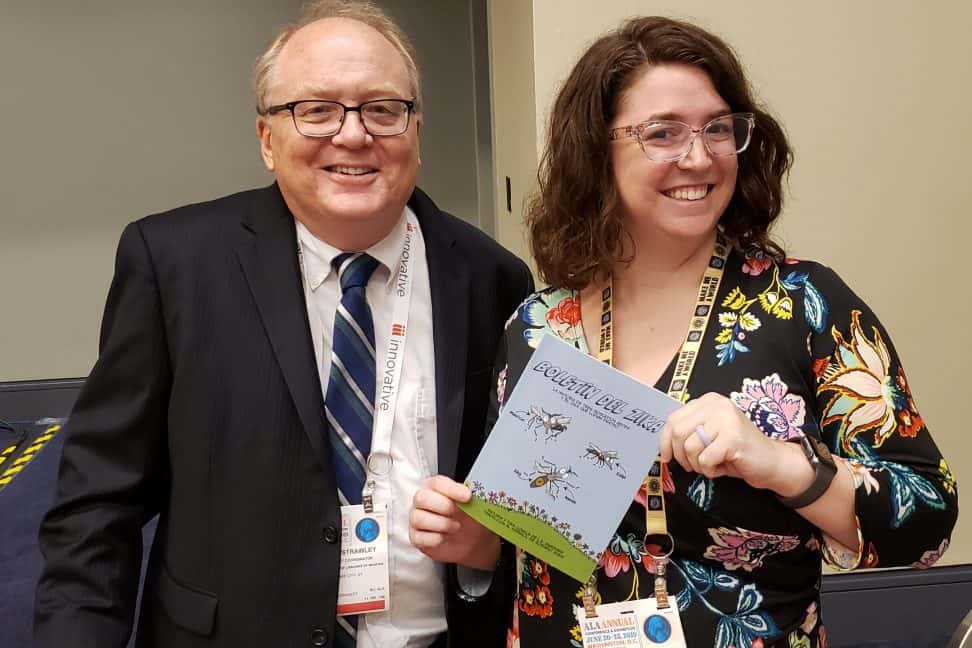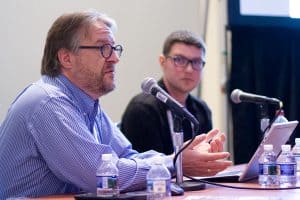
Citizen science is at the intersection of public participation, technology, and existing research projects,” said Alicia Lillich, emerging technologies specialist at the National Institutes of Health Library in Bethesda, Maryland, at “Citizen Science in Libraries,” a session of the American Library Association’s 2019 Annual Conference and Exhibition in Washington, D.C. June 24. The session was sponsored by the Association of Specialized, Government, and Cooperative Library Agencies. “The four distinguishing features of these projects are that anyone can participate, all participants use the same protocols, the data retrieved helps scientists come to real conclusions, and a wide community of people share the data for the advancement of science and the public benefit.”
Lillich added that these projects are neither clinical trials nor social science surveys, but represent the real involvement of the public in scientific research.
George Strawley, community engagement coordinator with the National Network of Libraries of Medicine, Midcontinental Region, said that citizen science projects “definitely lend themselves to K-12 students,” but colleges and communities can also get involved. He mentioned a few projects that have been in the news:
• The Big Bumblebee Discovery project was launched in the UK in 2014. Children and their parents observed and counted the numbers of bees visiting lavender flowers.
• The Planet Hunters project has volunteers review publicly available Kepler Space Telescope data to look for previously unknown exoplanets.
• The Stream Tracker project engages communities in several countries to monitor when and where water is flowing or frozen in streams.
• NASA’s Mosquito Habitat Mapper project enlists citizens in reporting potential breeding sites for mosquitoes so that scientists and public health officials can create models of mosquito population dynamics. The agency offers an app to help with species identification and maintains apps for other science projects involving clouds, land cover, and tree height.
Lillich said that librarians can find citizen science projects through several sources. The website SciStarter lists some 3,000 projects* searchable by topic or location. “There are projects for dog lovers, gamers, and gardeners alike,” she said. The site also offers a free, downloadable Librarian’s Guide to Citizen Science that has many program ideas. “Zooniverse can also help you locate projects by discipline,” Lillich said. “It also identifies historical projects where people can transcribe records or examine historical data for specific items.” The Show Me Librarian maintains a list of school-friendly science projects called All Things STEAM, and “ALA’s Programming Librarian is a good source for program ideas and models.”
Libraries can also participate in Citizen Science Day, usually held on April 14, sponsored by the Citizen Science Association, whose website offers “many event ideas and resources for libraries,” Lillich said. Citizen science clubs are an excellent venue for academic libraries, with North Carolina State University’s club serving as a model for others.
Strawley said that the National Library of Medicine offers several resources of interest to citizen science groups and other researchers:
• Tox Town provides excellent consumer-level information on locations and situations where you might be exposed to toxic chemicals and how to protect yourself.
• ChemIDplus, contains a database of 400,000 chemicals, searchable by substance, toxicity, physical properties, structure, and molecular weight.
• The Genetics Home Reference has consumer-friendly facts on the effects of genetic variation on human health, as well as the symptoms of 1,200 health conditions with a genetic basis.
• The Household Products Database offers information on the hazard levels of products used around the home for cleaning, building maintenance, yard care, personal and pet care, pest control, auto maintenance, and office work.
• Kids Environment Kids Health provides fun and educational resources for parents and children on health, science, and the environment.
Lillich wound up by recommending funding opportunities for citizen science projects. In addition to the National Network of Libraries of Medicine, librarians should “investigate the Foundation Center, your state library, and such government agencies as the Environmental Protection Agency, the National Science Foundation, and the US Forest Service” for funding, she said.
*This figure has been updated from the 1,200 projects cited in the original version.


